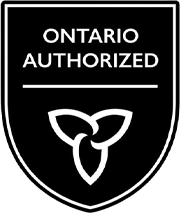A Beginner’s Guide to Cannabinoids: Unlocking the Power of Cannabis Compounds
Cannabinoids are the key drivers behind cannabis’ effects. Though THC and CBD are the most famous, there are over 100 other cannabinoids worth knowing.
What Are Cannabinoids?
They’re natural compounds in cannabis. They interact with the endocannabinoid system (ECS), which helps regulate mood, pain, appetite, and sleep.
The two most well-known cannabinoids are:
- Tetrahydrocannabinol (THC): The psychoactive compound responsible for the “high” sensation.
- Cannabidiol (CBD): Non-psychoactive and known for its potential anti-inflammatory and anxiety-reducing effects.
However, beyond THC and CBD, many other cannabinoids are being studied for their medical and therapeutic potential.
How Do Cannabinoids Work?
They bind to receptors called CB1 (in the brain and nervous system) and CB2 (in the immune system). This interaction influences everything from mood, memory, and pain reception, to inflammation and immune responses.
Meet the Big Two: THC and CBD
- THC: Produces a “high,” helps with pain and nausea, and boosts appetite.
- CBD: Non-intoxicating, known for calming, anti-inflammatory, and potential seizure-reducing effects.
Exploring Lesser-Known Cannabinoids
- CBG: A “parent” compound that may have anti-inflammatory and antibacterial properties.
- CBN: Formed when THC ages; mildly psychoactive (much l, possibly good for sleep.
- CBC: May enhance effects of other cannabinoids and offer anti-inflammatory benefits.
- THCV: Similar to THC but may suppress appetite and help with weight management.
The Entourage Effect
Cannabinoids and terpenes often work better together. This synergy may boost therapeutic benefits beyond what any single compound can do alone.
Cannabinoids and Therapeutic Potential
Cannabinoids show promise for pain relief, anxiety, seizures, and more. Ongoing research and legalization efforts are expanding their medical use.
The Future of Cannabinoids
As cannabis research grows, expect more cannabinoid-based products and therapies. Lesser-known cannabinoids may soon play a bigger role in both wellness and recreation.
Conclusion
There’s more to cannabis than just THC and CBD.
Stay informed, explore new discoveries, and consult a healthcare professional before trying any treatment.
Cannabinoid research is evolving quickly—keep an eye on what’s next!



